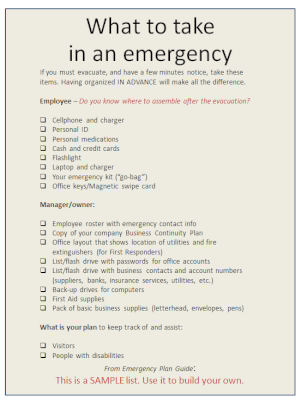Garlock – A Major Earthquake Fault Awakened

During the summer I wrote a couple of times about the earthquakes we experienced on the 4th and 5th of July. If you recall, those quakes, a 6.4 magnitude followed the next day by a 7.1, were centered in Ridgecrest, a town of about 30,000 located north of Los Angeles. (I added the approximate location to the map above.)
At the time, we saw news videos of homes on fire, store shelves emptying onto the floor, and images of cracks in local highways.
Ridgecrest faded from the front page of the news, but suddenly it’s right there again because there have been over 110,000 aftershocks in the web of interconnected faults in the Ridgecrest area. And as a result:
A once dormant fault has been awakened! And it’s a major one!
Look just below the red Ridgecrest label on the map to see the Garlock Fault. For well over 500 years the fault, running in an east-west direction for nearly 200 miles, has been silent.
But since the Ridgecrest quakes, that major earthquake fault has begun to move. Garlock has been reported as capable of producing a magnitude 8 earthquake!
Here are the questions I’ve had, and the answers I’ve found.
Is the Garlock Fault actually part of the Ridgecrest network?
No. The Ridgecrest network of smaller quakes stopped a few miles from the Garlock. But their activity destabilized the Garlock fault, which is a major fault. And as you can see on the map, the Garlock fault DOES connect to the San Andreas fault.
What kind of movement does the Garlock show?
The Garlock fault is just creeping at a slow pace, without any shaking going on. No one living in that area has really noticed it. But satellite imagery is so precise that it can measure the movement. Add the satellite info to measurements taken from seismometers and scientists now have an accurate picture of what’s happening. The fault has crept about .8 of an inch since July.
Doesn’t creeping lessen the strain on the faults?
Apparently not. Sometimes creeping can reduce the strain on the faults, but it could also trigger an earthquake.
Does all this mean that a major quake is more likely?
All the reports that I read said the same thing: “We just don’t know. The chances of ‘The Big One’ hitting are the same as they have been for years. It could arrive at any minute.”
What should we be doing as a result of this discovery?
Let’s review. When a major earthquake hits, buildings and roads collapse, cutting off communications and transportation and causing injury. However, most injuries are not from falling buildings. Rather, they are from items flying across a room or falling from shelves. Preparing in advance can reduce these dangers.
The good news is if you haven’t started preparing yet, you can start today using the step-by-step list below! (Find more to-do lists at BusinessInsider and also at Earthquake Country Alliance.)
Do a few things every day. Any preparations we make give us a better chance of making it through.
Step 1: Secure your house and where you work.
Just stand in the middle of a room and slowly turn around, and you’ll see what needs to be done to protect yourself from falling or moving items!
- Fasten down heavy pieces of furniture (refrigerator, bookcases, computer stands) using earthquake straps.
- Anchor light fixtures to the ceiling.
- Hang heavy items using brackets and screws and special earthquake hangers (monitors, mirrors, pictures).
- Remove heavy books and decorative items from high shelves and move to bottom shelves.
- Put small items into cupboards or use Museum putty to stick them to shelves (vases, collectibles).
- Store glass food containers in closed cabinets with latches.
Step 2: Have supplies to carry you through.
After a major earthquake, you are likely to be on your own, with no immediate help, for hours or even days. (1) Build a 72-hour survival kit that you can grab if necessary. Have one for each person at home, at work and one in the car. (2) Store other supplies in convenient places so you’ll be able to shelter in place for at least 10 days.
Here are the 8 categories you’ll want to consider for both the kit and for the shelter-in-place supplies: water, food, shelter/warmth, health/safety, light, communications (assume no power), sanitation, and personal items. (You may also want to add tools to help you make repairs after the quake.) Here’s a link to our two complete lists with dozens of items to consider.
This is a lot of stuff to think about! Make your own customized list and start to pull things together day by day. Don’t forget pets.
Step 3. Make a disaster plan.
Decide on an out-of-town friend or relative as the contact person for your family. Be sure everyone knows the contact’s cell phone number! Teach everyone in your household how to text, because when communication lines are overloaded a text may get through when a voice message won’t.
Train family members on how to use emergency equipment that might be necessary after a major earthquake: emergency radio, fire extinguisher, gas turn-off wrench.
Step 4. Start now to protect yourself financially.
This can include reviewing insurance coverage, setting aside emergency funds, and organizing all important documents. (Many disaster victims can’t prove they own their home, don’t have car ownership documents, lose IDs showing eligibility for pensions, etc.) Scan important documents and store them on an easy-to-manage flash drive or “in the cloud.”
Step 5. Know what to do when the quake hits!
There are many out-dated notions still floating around about standing in doorways, finding a “triangle of life,” etc. In a major earthquake you will NOT BE ABLE TO MOVE SAFELY. Try to keep away from glass windows and doors as you . . .

If you are outside, stay away from buildings, power lines, etc. that could fall.
Step 6. Organize your neighborhood for more resilience.
Recent disasters of all kinds have shown that neighbors can and will help, particularly if they know each other and have trained on what to do. (1) Get CERT training as a start. (2) Get one of Emergency Plan Guide’s Neighborhood Disaster Survival guides and use its suggestions to help your neighborhood get organized.
And something new if you are in California: the MyShake cellphone app.
Last Thursday was Great California Shake-Out Day. Over 10 million people participated! And Governor Gavin Newsom announced the launch of the nation’s first statewide earthquake early warning system.
The ShakeAlert system, developed by the University of California Berkeley and the Wire Emergency Alert system, has been available for schools, hospitals and other public agencies for a while. Now it has been made available to all citizens through a simple cellphone app – the MyShake app.
The MyShake app can be downloaded from Google Play (Android) and through iTunes from the Apple app store (iOS).
Basically, hundreds seismic sensors track ground movement, transmit it for analysis, and then if a quake of 4.5 magnitude or stronger is expected, the system sends an alert to selected grid locations. The alert message will be simple: “There is an earthquake. Drop, cover and hold on.”
(It all works because shaking waves travel at around .5 to 3 miles per second — but electronic transmissions are instantaneous. Want more details about ShakeAlert? Get this fact sheet from the US Geological Survey. )
What good will a few seconds warning do?
In a few seconds . . .
- You’ll be able to grab a child and huddle under a sturdy table or desk.
- You will have time to turn off the stove or blow out a candle.
- Doctors and dentists can lift the scalpel or drill.
- Officials can slow or stop trains.
- Elevators can be shut off.
- Automatic doors can be opened.
- Equipment can be shut off or set to safe mode.
What would YOU do right now to protect yourself if an earthquake were arriving in 5-10 seconds?
Virginia
Your Emergency Plan Guide team
P.S. During the time I was working on this Advisory, two more quakes were felt in Northern California – 4.5 and a 4.7 magnitude. Earthquake activity is continuous. You can be prepared.




 (Ha, ha! When you hear that, do you laugh along with me?)
(Ha, ha! When you hear that, do you laugh along with me?) You’ve seen the stats here before. Check out numbers from a June 2015 Nationwide Insurance survey:
You’ve seen the stats here before. Check out numbers from a June 2015 Nationwide Insurance survey: